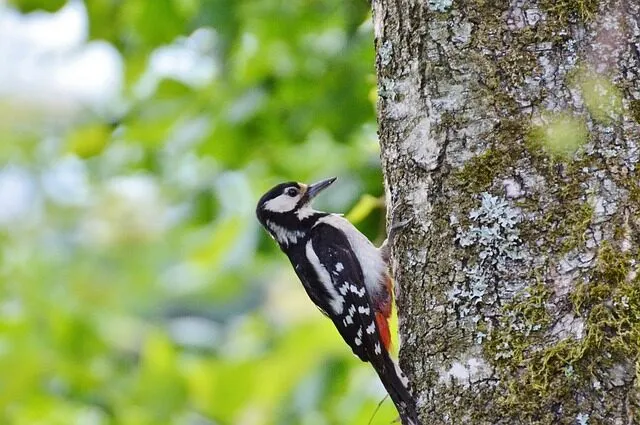Carpenter bees are a common sight buzzing around wooden structures like eaves, decks, and fences, drilling tiny tunnels that can turn into a real headache for homeowners. These large, solitary bees are notorious for burrowing into wood, and while they might be fascinating to watch, they can cause quite a bit of damage over time. Naturally, many people wonder about ways to keep them at bay, and an interesting question pops up: do birds eat carpenter bees? Understanding whether our feathered friends play a role in controlling these bees can shed light on a natural way to manage their populations. In this article, we’ll dive into whether birds actually prey on carpenter bees, which bird species are the most likely to do so, and how this natural predation might help keep carpenter bee numbers in check.
Do Birds Really Eat Carpenter Bees?
- Birds as Natural Predators
- Birds and Insects: Many bird species rely on insects as a primary food source. Insects provide essential proteins and nutrients, making them a vital part of a bird’s diet, especially during the breeding season.
- Carpenter Bees as Prey: Carpenter bees, like other insects, can become a target for birds. However, due to their size, speed, and the fact that they can sting, they are not the first choice for most birds. That said, some bird species do eat carpenter bees when the opportunity arises.
- Bird Species That Eat Carpenter Bees
- Woodpeckers: Among the most notable predators of carpenter bees are woodpeckers. These birds are known for their ability to peck into wood to find insects, including carpenter bee larvae. Woodpeckers may peck at wood where carpenter bees have nested, aiming to reach the larvae inside the tunnels.
- Bluebirds: While not as specialized as woodpeckers, bluebirds have been observed catching and eating carpenter bees, especially during the breeding season when they need extra protein.
- Sparrows: Sparrows, particularly house sparrows, are opportunistic feeders that may catch and consume carpenter bees, though this is less common.
- Predation vs. Population Control
- Natural Balance: While birds do eat carpenter bees, this predation is unlikely to significantly control carpenter bee populations on its own. Birds may help reduce the number of bees in a localized area, but they do not target carpenter bees exclusively.
- Impact on Nests: Birds like woodpeckers may cause damage to wooden structures while trying to access carpenter bee larvae. While this may reduce the number of bees, it can also exacerbate the damage already caused by the bees themselves.
The Role of Birds in Carpenter Bee Management
- Encouraging Bird Activity
- Attracting Natural Predators: Homeowners looking to manage carpenter bee populations naturally might consider attracting birds to their property. Installing birdhouses, planting native shrubs, and providing water sources can encourage birds like woodpeckers and bluebirds to frequent the area.
- Bird Feeders: While bird feeders typically attract seed-eating birds, they can also bring insectivorous birds to your yard, especially if you offer mealworms or suet.
- Balancing Act: Birds and Bee Populations
- Understanding Limitations: It’s important to understand that while birds can help manage carpenter bee populations, they are not a standalone solution. Other methods, such as sealing potential nesting sites and using traps, should be used in conjunction with encouraging natural predators.
- Protecting Your Home: If woodpeckers are targeting carpenter bee nests in your home’s wooden structures, it’s essential to repair and seal the damage promptly to prevent further issues.
Other Natural Predators of Carpenter Bees
- Insect Predators
- Dragonflies: These agile hunters can catch carpenter bees in mid-air, though they typically prefer smaller prey.
- Spiders: Ground-dwelling spiders may capture carpenter bees that venture too close to their webs, particularly if the bees are weakened or disoriented.
- Mammalian Predators
- Raccoons and Skunks: These animals may dig into wood to access carpenter bee nests, especially when other food sources are scarce.
Final Thoughts
Birds do eat carpenter bees, but their impact on controlling carpenter bee populations is limited. While woodpeckers, bluebirds, and sparrows may target these bees, they do so opportunistically rather than exclusively. Encouraging birds to frequent your property can be part of a broader strategy for managing carpenter bees naturally, but it should be complemented with other methods to protect your wooden structures effectively. By understanding the relationship between birds and carpenter bees, you can make informed decisions about how to maintain the balance between preserving wildlife and safeguarding your home.
Resources
- Bird Conservation: Audubon Society
- Natural Pest Control: National Wildlife Federation
- Woodpecker Control Tips: The Spruce
FAQs
- Do all birds eat carpenter bees?
- Not all birds eat carpenter bees, but some species, like woodpeckers and bluebirds, may prey on them.
- Can attracting birds help control carpenter bee populations?
- Attracting birds can help, but it’s not a guaranteed solution for controlling carpenter bee populations.
- Do woodpeckers cause damage while hunting carpenter bees?
- Yes, woodpeckers can cause additional damage to wooden structures while trying to access carpenter bee larvae.
- Are there other natural predators of carpenter bees?
- Yes, in addition to birds, carpenter bees may be preyed upon by dragonflies, spiders, and some mammals.
- What can I do to protect my home from carpenter bees?
- Sealing cracks and holes in wood, using traps, and painting exposed wood surfaces are effective ways to protect your home.

